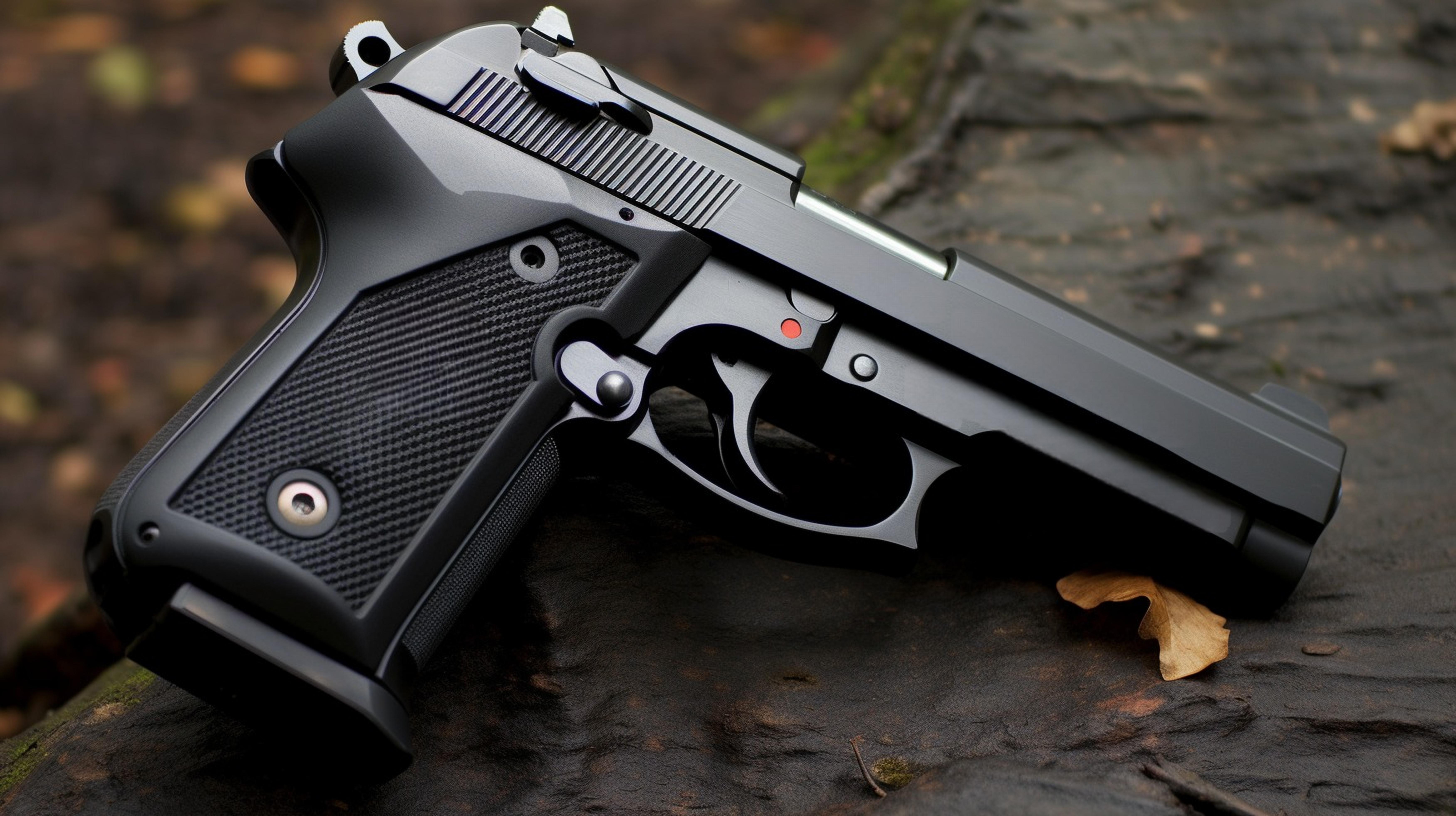CA-415 vs Other AR-Style Rifles: How It Compares on Value and Performance

The AR-platform market is crowded, ranging from bargain-basement plinkers to high-end precision rifles. Into that sea of options steps the Coharie Arms CA-415, a family member of AR-style rifles aimed at giving buyers a balance of affordability and capability. Whether you’re shopping for a first rifle, upgrading a home-defense setup, or comparing component quality and long-term value, it helps to understand where the CA-415 stands against competitors on the most meaningful axes: reliability, accuracy, ergonomics, parts compatibility, and total cost of ownership. This article dissects those areas in detail, explains practical trade-offs, and helps you decide whether the CA-415 or another AR-style rifle best fits your needs.
Understanding the AR Marketplace: Price vs Performance
Before getting into the CA-415 specifically, it’s worth stepping back and summarizing the AR landscape. On one end are no-frills rifles from major budget manufacturers and direct-to-consumer builders: Palmetto State Armory (PSA), Smith & Wesson’s M&P15 Sport lines, and Ruger’s entry ARs. These deliver acceptable performance for training and casual shooting. On the other end are premium brands—Daniel Defense, BCM (Bravo Company), Noveske, and others—charging a premium for tighter tolerances, advanced materials, and refined manufacturing. In the middle sits a large swath of rifles that try to blend cost-effectiveness with better components: PSA’s higher-tier lines, Aero Precision builds, and boutique builders who offer selective enhancements.
Value therefore isn’t just sticker price; it’s the balance of out-of-the-box functionality, the expected reliability with common calibers (5.56/.223), the quality and longevity of parts, and how easily you can find spare parts or upgrades. A rifle that needs constant work or costly upgrades isn’t a good value, even if the initial price was low.
Key Performance Metrics to Compare
When comparing AR-style rifles, focus on a few measurable and observable factors:
-
Reliability: How consistently does the rifle feed, fire, extract, and eject under different conditions and with different ammo? Does it require frequent cleaning or tuning?
-
Accuracy: What does the rifle deliver at practical distances (50–300 yards)? How much of that is due to barrel quality vs. trigger and shooter skill?
-
Fit and Finish: Quality of materials, machining, and attention to detail—affects corrosion resistance, ease of maintenance, and aesthetics.
-
Parts Compatibility: Ability to swap upper/lower parts, use standard-pattern accessories (handguards, triggers, bolts, gas blocks).
-
Ergonomics: Balance, length of pull, stock comfort, and controls (safety, bolt catch, magazine release) placement.
-
Support and Warranty: Manufacturer responsiveness, warranty coverage, and replacement parts availability.
Coharie Arms CA-415: A Complete Overview
Coharie Arms entered the AR market with a model lineup intended to offer mainstream AR functionality at a mid-leaning price point; Coharie Arms CA-415: A Complete Overview shows the CA-415 typically adheres to standard AR-15 dimensions and uses common pattern parts, meaning it fits mil-spec or commercial-style components in most cases. Buyers are generally drawn to it for a mixture of price competitiveness and a parts package that doesn’t feel cheap—usually including a decent barrel profile, an acceptable factory trigger, and a handguard with M‑LOK or KeyMod slots for accessories.
On the CA-415, you’ll commonly find materials and finishes that aim to resist corrosion and wear (nitride or chrome-lined barrels being common upgrades), and a gas system tuned for reliability in a range of ammo loads. Most CA-415 offerings prioritize modularity: freeing the user to customize optics, lights, grips, and stocks without proprietary interfaces.
Barrel, Gas System & Accuracy
A rifle’s barrel and gas system are the heart of its performance. Coharie Arms tends to spec barrels that are either chrome-lined or nitride-treated, which enhances surface hardness and corrosion resistance. Barrel contours might range from lightweight pencil barrels to mid-weight profiles; thicker profiles usually deliver better heat management and slightly improved accuracy, though at the cost of additional weight.
Gas system length (carbine vs. mid) affects felt recoil and dwell time; CA-415 variants commonly use a carbine-length gas system for predictable cycling with standard buffer weights, though some models offer mid-length for softer recoil impulse. Accuracy expectations from a CA-415 out of the box are generally in line with budget-to-mid-tier offerings: capable of consistent 1.5–3 MOA performance with decent ammo and a competent shooter. That’s more than enough for defensive use and most recreational shooting; precision shooters will likely opt for upgraded barrels and triggers.
Trigger, Controls & Ergonomics
Factory triggers across mid-tier ARs, including the CA-415, are often functional but basic—single-stage mil-spec triggers that are adequate for defensive use but may feel gritty and long for precision work. The typical buyer will often replace the trigger as a first upgrade to improve the rifle’s shooting experience. Controls on CA-415 models tend to follow standard AR ergonomics and use ambidextrous options on select builds, which is a plus for left-handed shooters or tactical applications.
Stocks, pistol grips, and handguards in the CA-415 package are usually aftermarket-style components from known manufacturers or generic but serviceable parts. You’ll want to check the stock’s adjustability and the handguard’s stiffness—flex in a free-floating rail can slightly affect accuracy when leaning on the handguard or mounting heavy optics.
Parts Interchangeability and Aftermarket Support
A major advantage of standard-pattern ARs is parts interchangeability. The CA-415 typically supports common mil-spec uppers/lowers, magazines, triggers, and bolts, meaning spare parts and upgrades are widely available and often affordable. This interoperability is a strong point when assessing long-term value: you won’t be forced into proprietary accessories or awkwardly long waits for replacement parts.
Owners considering long-term upgrades should confirm whether the CA-415 uses a standard barrel extension, proprietary handguard mounting, or unique gas block. Most models aim for normal compatibility, but always verify specifics before purchasing aftermarket barrels or handguards.
Reliability and Real-World Use
Reliability is the bottom line. In general, the CA-415—properly maintained and assembled—performs reliably with common 5.56/.223 ammo from full-power XM193 to grain-varied defensive loads. The quality of assembly (headspace, gas alignment, gas tube stability) plays a major role. Many buyers report good out-of-box performance with typical mil-spec magazines; however, some units may benefit from break-in and occasional adjustments such as swapping buffer weights or gas block tweaks to ensure smooth cycling with heavier or lighter ammo.
Compared to premium brands, the CA-415 might show slightly more variance in initial fouling sensitivity and parts tolerances, but these are often addressed via standard owner upgrades or routine maintenance. Compared to simpler budget rifles, the CA-415 usually offers superior finish and slightly better parts spec, which can translate into fewer headaches over time.
Comparing Value: CA-415 vs PSA, Ruger, BCM, Daniel Defense
-
Versus Budget Builders (PSA, Ruger entry-level): CA-415 often offers a middle ground—better-than-basic components and fit/finish without a major premium. If you want something more reliable or higher spec than a $600 basic build, CA-415 can be a good value.
-
Versus Mid-tier Quality (Aero Precision, higher PSA tiers): Here the lines blur. Aero and some PSA mid tiers may offer tighter tolerances or more refined matching, while CA-415 competes on price and modularity. PSA/Aero may win on precision or factory consistency.
-
Versus Premium (BCM, Daniel Defense, Noveske): Premium brands win on raw durability, tighter tolerances, and mil-spec-plus quality control. They demand a higher price. If you need a rifle for harsh professional use or want the lowest long-term maintenance risk, premium rifles can be worth the investment.
-
Overall Value: The CA-415 is best positioned for buyers who want a solid, serviceable rifle that doesn’t require immediate upgrades, but also who are cost-conscious and plan selective upgrades over time.
Who Should Choose the CA-415?
The CA-415 fits several buyer profiles well:
-
New shooters who want a reliable platform that’s not expensive.
-
Concealed-carry or home-defense owners seeking a practical, customizable rifle.
-
Budget-minded shooters who still want a solid baseline for upgrades.
-
Enthusiasts who want an AR that accepts widely available parts without paying premium brand prices.
Who Might Want Something Else?
-
Competitive shooters or precision marksmen who demand sub-MOA performance out of the box.
-
Operators or professionals who need the absolute highest reliability and are willing to pay for it.
-
Buyers who prefer an established brand warranty or a specific ecosystem of premium accessories.
Maintenance, Warranty, and Resale Considerations
Regular maintenance—cleaning the bolt carrier group, checking headspace, and ensuring proper lubrication—will keep any AR running well, CA-415 included. Warranty and customer service should factor into your buying choice: research Coharie Arms’ warranty policy and user experiences to anticipate support responsiveness. When it comes time to sell, mid-tier rifles like the CA-415 typically hold reasonable resale value, especially if upgraded with quality components; however, premium brands usually retain value better due to brand reputation.
Final Thoughts: Balancing Cost, Performance, and Longevity
The Coharie Arms CA-415 represents a pragmatic choice in a crowded AR market. It offers a sensible balance of affordable pricing, parts compatibility, and satisfactory out-of-the-box performance. It won’t match the absolute refinement or reputation of high-end brands, but for most civilian and recreational users, its value proposition is strong. If you’re buying your first AR or want a solid platform to customize over time, the CA-415 deserves serious consideration—just be honest with yourself about how much accuracy and durability you need out of the box and budget for key upgrades like a quality trigger or match-grade barrel if your demands increase. For current listings and market comparisons, see GunsAmerica.







